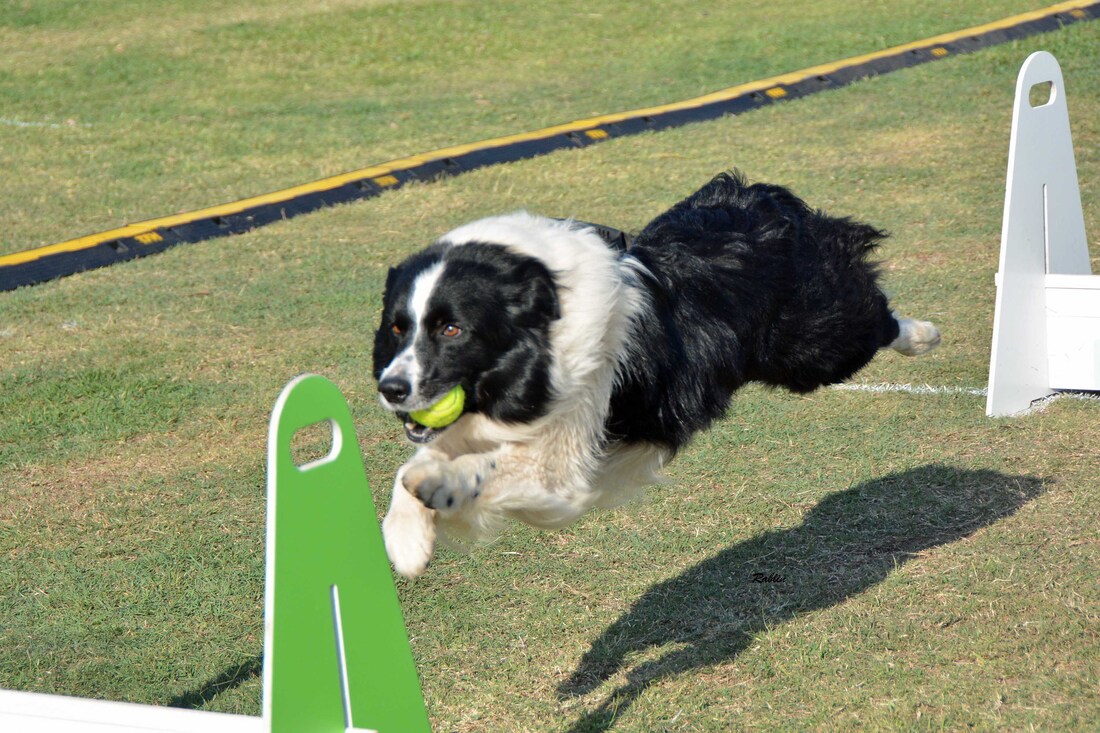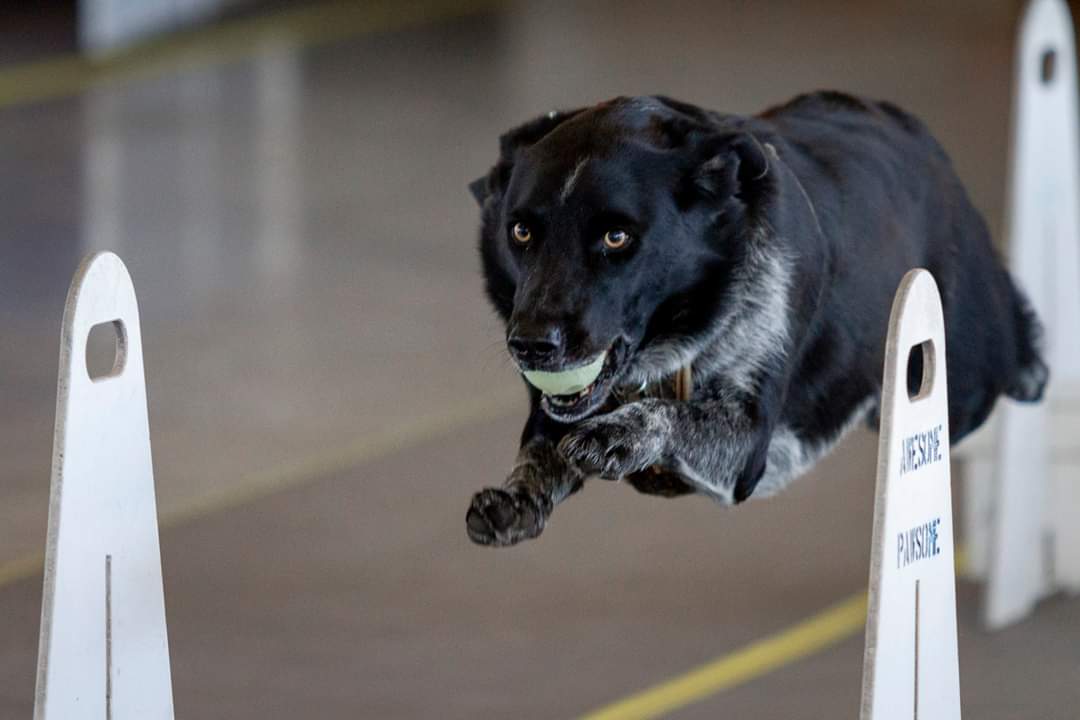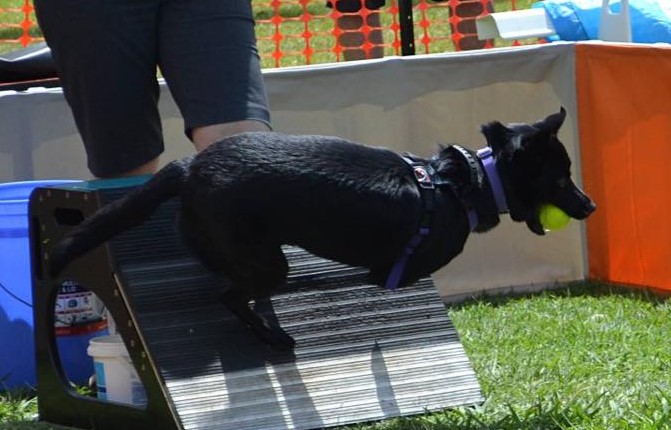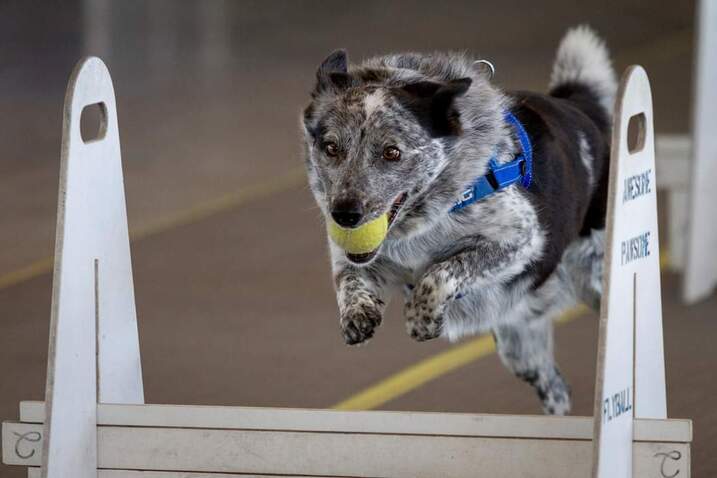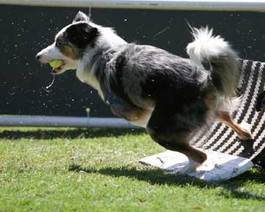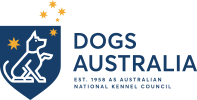Flyball
What is flyball? Flyball is a relay race between two teams of four dogs. Racing side by side, one dog from each team must go over four hurdles, trigger a flyball box pedal, catch (retrieve) a ball and then return over all four hurdles to the start/finish line where the next dog eagerly awaits.
Flyball is a team sport. Each team consists of four dogs racing in each heat, plus up to two reserves. Reserves can be interchanged after each heat. There are between three and
five heats to a race, and a team has to win a majority of heats to win the race.
What are the benefits of flyball? Flyball encompasses all the things that dogs love to do - jumping, catching, retrieving, competing and striving to please their owners. Any dog can participate, regardless of breed, shape or size. Flyball does not interfere with obedience training. In fact, the sport reinforces the disciplines taught in obedience class.
Besides being great for dogs, flyball is a lot of fun for people too! It is a great way to meet people locally and all around Australia. The team-work aspects bring people together as they strive to improve their team's performance. Flyball can be as competitive as you want to make it. The best part of all is just having fun with your dog, and seeing the look of excitement on your dog's face at the start of a day of racing, and the look of content at the end of the day.
Flyball is a team sport. Each team consists of four dogs racing in each heat, plus up to two reserves. Reserves can be interchanged after each heat. There are between three and
five heats to a race, and a team has to win a majority of heats to win the race.
What are the benefits of flyball? Flyball encompasses all the things that dogs love to do - jumping, catching, retrieving, competing and striving to please their owners. Any dog can participate, regardless of breed, shape or size. Flyball does not interfere with obedience training. In fact, the sport reinforces the disciplines taught in obedience class.
Besides being great for dogs, flyball is a lot of fun for people too! It is a great way to meet people locally and all around Australia. The team-work aspects bring people together as they strive to improve their team's performance. Flyball can be as competitive as you want to make it. The best part of all is just having fun with your dog, and seeing the look of excitement on your dog's face at the start of a day of racing, and the look of content at the end of the day.
Eligibility: Dogs must be 12 months old to go over the jumps. However, training can start a couple of months earlier to work on motivation, practice going around the flyball box and learning to ignore the other dogs.
Some basic obedience skills are beneficial before starting flyball training.
Some basic obedience skills are beneficial before starting flyball training.
How do I get involved in flyball? Flyball training is held on Tuesday nights starting at 7pm.
Beginners are accepted into class each week. Training is $5.00 per night plus club membership of $20 (single) or $30 (family of 2 or more). You must be a member of the club to train.
TO BOOK A PLACE IN OUR FLYBALL CLASS please send your details via the Inquiry Form below. Our flyball training coordinator will contact you to provide further details.
Beginners are accepted into class each week. Training is $5.00 per night plus club membership of $20 (single) or $30 (family of 2 or more). You must be a member of the club to train.
TO BOOK A PLACE IN OUR FLYBALL CLASS please send your details via the Inquiry Form below. Our flyball training coordinator will contact you to provide further details.
About competitions. A flyball course consists of two racing lanes, side by side down a 51-foot (15.54m) course. There are two sets of hurdles and flyball boxes. Each team's racing lane consists of 4 hurdles spaced at 10 feet (3.05m) intervals. The first hurdle being 6 feet (1.84m) from the start/finish line and a flyball box is placed 15 feet (4.57m) after the fourth hurdle. The flyball box ejects a ball after the dog triggers the pedal on the front of the box.
Each dog must run in relay fashion over the hurdles, trigger the box, retrieve the ball and return over the hurdles and cross the finish line so that the next dog can be released. The first team to have all four dogs complete the course, without error, wins the heat. Missed hurdles and dropped balls require the dog to rerun the course after the rest of the team has finished.
Each dog must run in relay fashion over the hurdles, trigger the box, retrieve the ball and return over the hurdles and cross the finish line so that the next dog can be released. The first team to have all four dogs complete the course, without error, wins the heat. Missed hurdles and dropped balls require the dog to rerun the course after the rest of the team has finished.
Jump heights for each team are set at 4 inches (10.2cm) lower than the shoulder height of the smallest dog in the team. The minimum height is 8 inches (20.3cm) and the maximum 16 inches (40.6cm).
Competitions are run in divisions, based on where the teams are seeded. The fastest teams are put in Division 1 and the slower teams in Division 2 etc. This enables every team to have a fair go and be competitive in their division.
Visit the Australian Flyball Association’s website: www.flyball.org.au
Competitions are run in divisions, based on where the teams are seeded. The fastest teams are put in Division 1 and the slower teams in Division 2 etc. This enables every team to have a fair go and be competitive in their division.
Visit the Australian Flyball Association’s website: www.flyball.org.au
